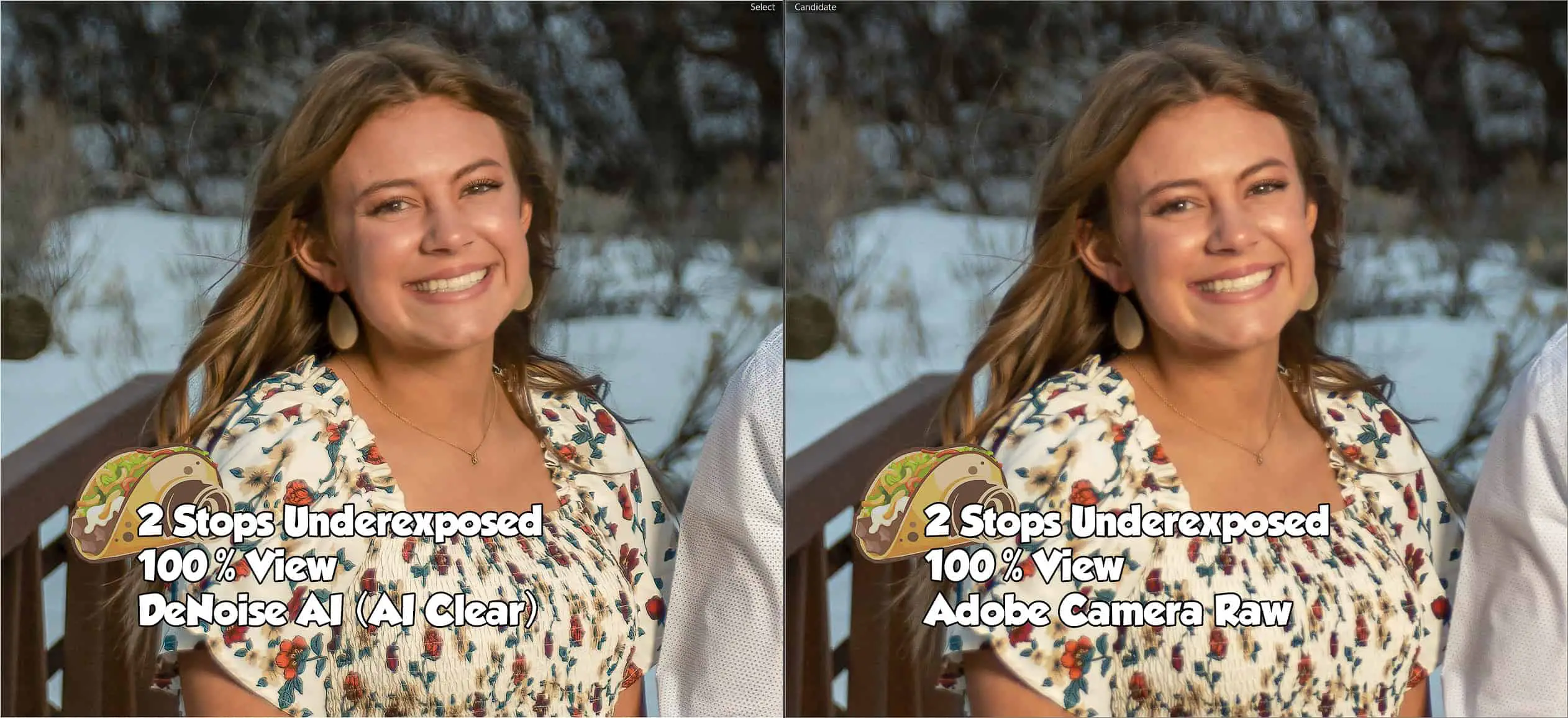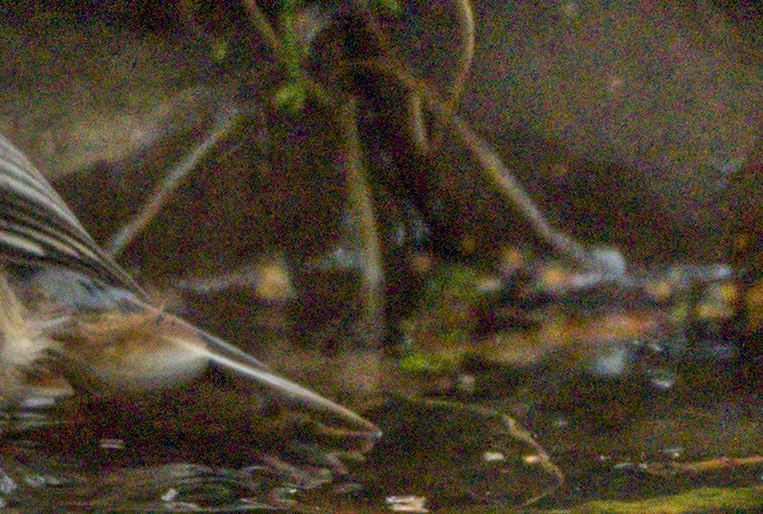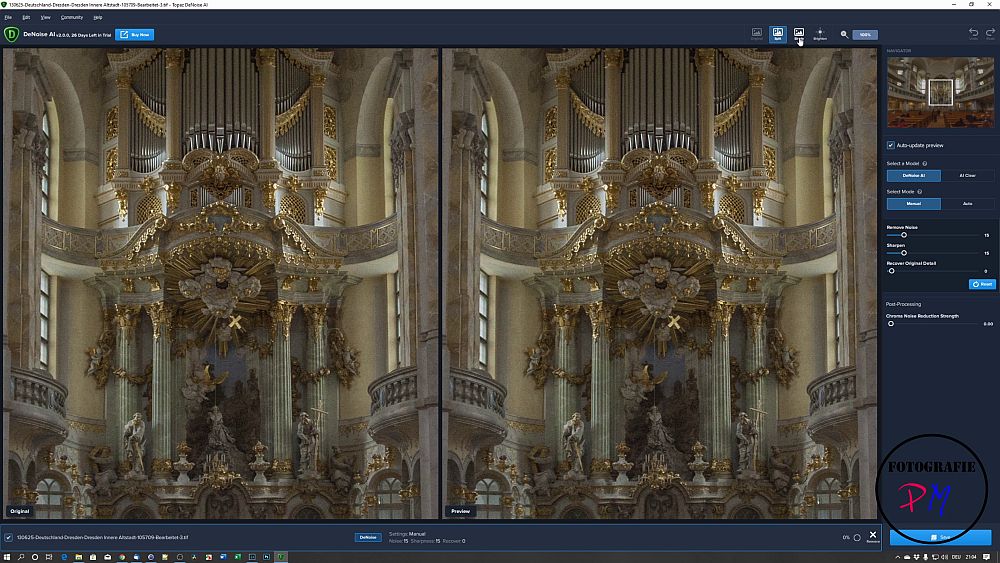

Shame really as I suspect I may very well have enjoyed LR as much if not more than I do C1.
#Denoise lightroom trial
IMO It's a real shame that the C1 NR capabilities are not as good as LR, nor that I got a frosty response from Adobe when I contacted them back at the end of last year to inquire about why their then offer was not available for peeps who wanted to trial their product for a few days first.Įven though I am against the whole annual subscription model I was contemplating buying into the Adobe package, which isn't bad value when you look at astronomic perpetual license fee Phase One charges for C1, and I probably would have gone ahead if it wasn't for the poor response I got from their representative. Yep I suspected this and hence I worded my comment in such manner. Personally I recommend trying out Topaz to anyone and to make your own personal judgement call. The only way to know for sure which works better for you is to suck it and see. At the end of the day Topaz is a worthy plugin and produces good results and it integrates well with many people's workflow from what I can tell.

something that DxO sadly can't match IMO as it's integrated into the RAW Processor and not really usable as a plugin.įinal thoughts: Lightroom folks may argue that LR provides sufficient NR capabilities and I won't argue with that.

Not only does Topaz take away the hassle of applying NR it seems to apply just the right amount of sharpness to created the perfect balance between NR, 'Sharpness' and 'Detail' retention and the best bit is that it integrates very well with the main RAW Processors and Photo Editors on the market i.e. Even so I can get some decent results using C1 but to match LR's capabilities I've found that I needed to use layers / masks in C1 to apply varying degrees of NR, but this is way too cumbersome. I completely agree with Robert Oslin and have a similar experience using Capture One (C1) which probably is nowhere near as as good as Lightroom (LR) when it comes to Noise Reduction (NR). The content Pye covers will appeal to every level of photographer and will save you an incredible amount of time on your image editing.
#Denoise lightroom how to
If you'd like to learn how to use Adobe Lightroom more efficiently on any device, make sure to check out our Mastering Adobe Lightroom course with Pye Jirsa. This is an excellent way of keeping detail because you're not affecting the whole image, and portions that you want to keep smooth and noise-free (such as my green background here) will stay as such. I noticed that there are some portions of feathers on the sparrow's body and wing that are sharp as well, so I continued painting over these areas to selectively improve the detail in those areas. I like to zoom out and take in my subject as a whole before committing the brush edits. It's a good idea to take a step back and re-analyze the photo at this point. Zoom out and study the whole photo again to determine if there are other areas to apply the adjustment brush to and use the Auto Mask feature to keep brush strokes to specific areas on your subject Namely, the eyes, beak, and fine feathers that were all captured relatively sharply in the original image. I've boosted Texture right up to +77 and made a selection over only the most important areas that I wished to reintroduce detail to. Instead, there's a better tool to use: the Texture slider. But please, don't! If you want to go down that route you'll just be undoing everything you refined in the noise removal process. Now, it's tempting to think that you should just turn up the Sharpness slider at this point. I also ticked the Show Selected Mask Overlay button (keyboard shortcut O) so that I could see where I was painting.

I set a medium Feather because I wanted the brush to be soft enough that it wasn't obvious exactly where I painted. Head up to the Adjustment Brush and resize your brush so that you can paint over some fine details such as the eye and face. I used the Adjustment Brush to add texture to the areas on the bird's face that I deemed most important, thereby reintroducing detail to specific areas (rather than the entire image)


 0 kommentar(er)
0 kommentar(er)
